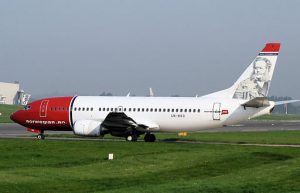If you’re planning your summer overseas vacation, you may be surprised to discover you have new options for flying out of a smaller regional airport closer to home. According to Brian Pearce, chief economist and director of the International Air Transport Association, 700 routes have been added in the past year.
The increased numbers of people traveling, the entrance of new low-cost carriers bringing long-haul flights to consumers, and the frustration with congestion at bigger airports have fueled the upsurge in offerings at smaller airports, John Grant, senior analyst with OAG, told the New York Times.
While most of the new airports with international offerings are in the U.S., carriers have increased their fight options in European and Asian markets as well. This provides travelers with a larger selection for segmented travel while overseas as well.
What has made this a profitable consideration for the airlines? The manufacturing of mid-size aircraft with better fuel efficiency. Since 2012, Boeing and Airbus have found markets for their smaller medium- and long-range planes with carriers looking to expand their offerings between smaller cities.

Norwegian Air is hoping their 737s will give them access to new airports. (That’s Henrik Ibsen on the tail.)
Norwegian Airlines is banking on the addition of Boeing’s 737 Max aircraft to increase its route map. The seating configuration can be customized to seat between 100 to 230 seats. “The Max, that’s a single aisle that can fly on routes to secondary cities,” Bjorn Kros, Norwegian’s CEO, told the New York Times. “You will see a lot of low fares and a new segment of people start flying.”
Airlines are also finding smaller cities attractive because of the savings in ground costs. Hotel costs for crew, landing fees, and fuel costs are lower at smaller airports than at the bigger ones. Travelers also save because their costs — like car rental and parking — are lower too.
Airports are also using data about the travel costs of companies in their cities. For example, Hartford, Conn. airport officials showed Aer Lingus how 23 of Hartford’s business were spending $40 million on trans-Atlantic flights every year. So Aer Lingus has begun daily flights to and from Bradley International Airport.
If people can get to their events a few hours faster, rather than traveling an additional two or three hours to fly out of a major airport, everyone wins.
Finally, passengers benefit from these new routes because it’s a lot less hassle when flying from a smaller airport. Security lines move quicker, customs and immigration lines are shorter, and baggage is claimed faster. Who wouldn’t want those benefits if they could get them?
Do you fly out of regional airports or battle your way through the larger ones? Do you have any preferences? Share them in the comments below, on our Facebook page, or in our Twitter stream.
Photo credit: Arpingstone (Wikimedia Commons, Public Domain)
